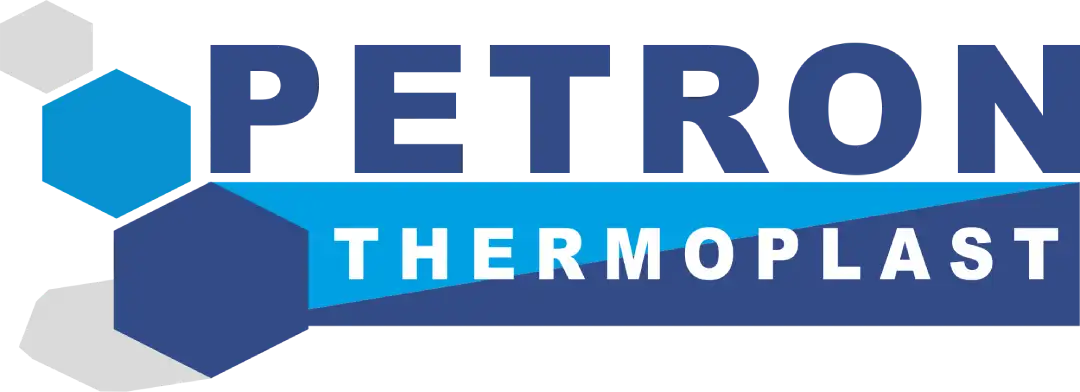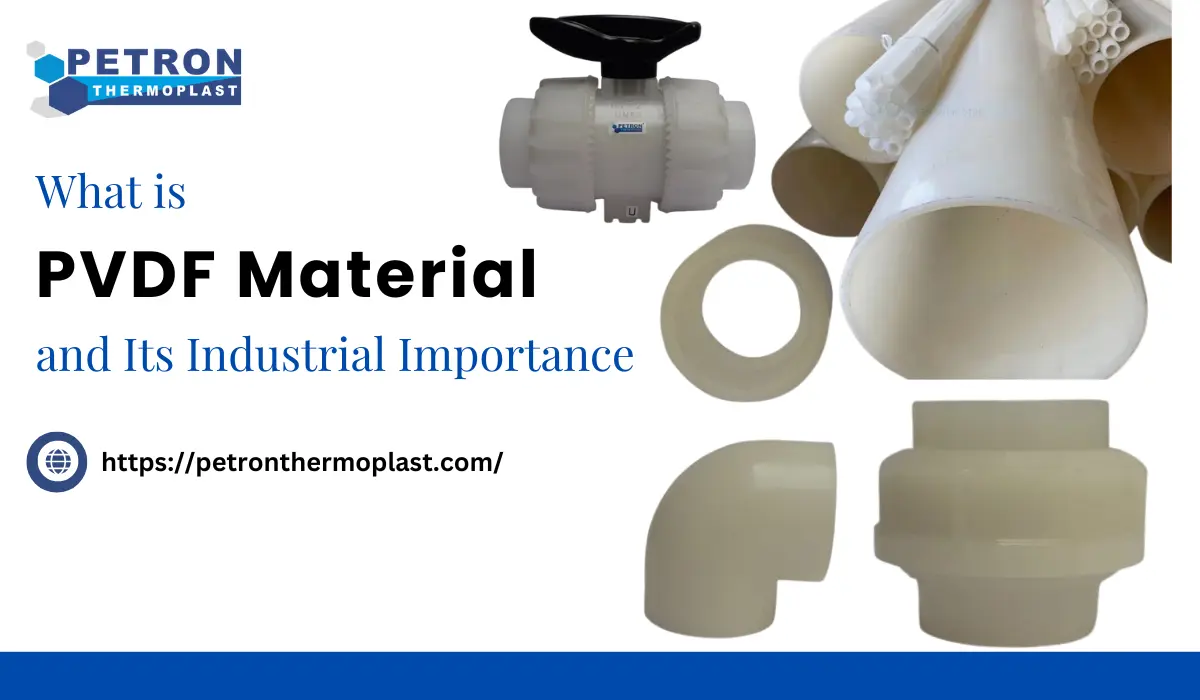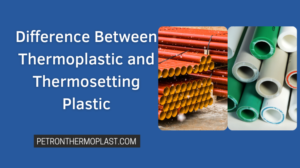What is PVDF Material?
Polyvinylidene fluoride, or PVDF, is a semi-crystalline structured thermoplastic fluoropolymer that is highly inert, tough, and stable. PVDF material has excellent chemical resistance, high crystallinity, and good thermal stability, to name a few of its many advantages. PVDF (Polyvinylidene Fluoride) is a high-performance thermoplastic polymer known for its exceptional chemical resistance, mechanical strength, and thermal stability. PVDF Material is a semi-crystalline fluoropolymer that offers high resistance to acids, bases, solvents, and extreme environmental conditions, making it a preferred choice for applications requiring durability and chemical stability.
One of the standout features of PVDF Material is its excellent thermal stability, allowing it to withstand high temperatures up to 150°C (302°F) without significant degradation. It also has superior mechanical properties, including high tensile strength and impact resistance, ensuring long-lasting performance even under harsh conditions. Another major advantage of PVDF Material is its UV and weather resistance, making it suitable for outdoor applications where exposure to sunlight and harsh environments is common.
PVDF Material is used for manufacturing pipes, fittings, tanks, and pumps that handle corrosive fluids. In semiconductor manufacturing, PVDF Material components play a crucial role in ensuring high-purity processing systems resistant to contamination.
Overall, PVDF Material is a premium substance that offers a combination of high chemical resistance, thermal stability, mechanical strength, and weather durability, making it an ideal choice for demanding applications.
List of PVDF Material Products Manufactured By Petron Thermoplast
Petron Thermoplast provides high-quality PVDF products for chemical processing, semiconductor manufacturing, water treatment, and industrial applications.
| Category | PVDF Products |
| PVDF Pipes & Fittings | PVDF Pipes (Various Sizes & Specifications) PVDF Elbows (45° & 90°) PVDF Tees (Equal & Reducing) PVDF Reducers (Concentric & Eccentric) PVDF End Caps PVDF Flanges (Slip-On, Blind, Weld Neck) PVDF Couplings & Unions |
| PVDF Valves | PVDF Ball Valves (Single & Double Union) PVDF Butterfly Valves PVDF Diaphragm Valves PVDF Check Valves PVDF Foot Valves PVDF Needle Valves PVDF Pressure Relief Valves |
| PVDF Sheets & Rods | PVDF Solid Sheets PVDF Welding Rods PVDF Hollow Rods PVDF Machined Components |
| PVDF Filters & Filtration Systems | PVDF Membrane Filters PVDF Cartridges for Chemical Filtration PVDF Gas & Liquid Filtration Systems |
| PVDF Machined & Custom Parts | Custom PVDF CNC Machined Parts PVDF Seals & Gaskets PVDF Bushings & Bearings PVDF Pump Components |
| PVDF Linings & Coatings | PVDF Lined Pipes & Fittings PVDF Lined Valves PVDF Coated Components for Corrosion Protection |
| PVDF Tanks & Storage Solutions | PVDF Chemical Storage Tanks PVDF Process Tanks PVDF Lined Reactors |
How is PVDF manufactured?
- PVDF Sheet and resin are created by polymerising 1,1-difluoroethylene (CH2=CF2) using free radicals. The polymerisation occurs in an emulsion at 10-150°C and 10-300 atm pressure. The material obtained is then formed into films, rods, tubes, and sheets.
- PVDF polymer is most commonly produced using chlorotrifluoroethylene (CTFE) or hexafluoropropene (HFP).
- PVDF copolymer made from HFP is more flexible than PVDF homopolymer grades.
- CTFE-derived comoolymes outperform HFP-derived polymers. They are more flexible, shrink less, and have an excellent low-temperature performance range.
- Furthermore, using crosslinking, Polyvinylidene Fluoride is exposed to ionising radiation, allowing for various modifications to its thermal and mechanical properties. Furthermore, different resins, such as acrylics, methacrylic, and acrylic rubbers, are partially compatible with the polymer.
PVDF material properties:
| Properties | Values | Units |
| Processing Temprature | -220°C | – |
| Tensile Strength @23°C | 50 | Mpa – ASTM – D638 |
| Thermal Conductivity@23°C | 0.2 | W/m.k – ASTM C177 |
| Impact Strength | No Break | – |
| Melting Point | 338-347 | deg F |
| Dielectric Strength | 20-25@ 1mm thick | kV.mm – ASTM D149 |
| Elongation at Break @23°C | 0.4 | ASTM-D1894 |
| Weathering resistance | Excellent | – |
| Continues working temperature | 150 | °C |
| Limiting Oxygen Index | 44 | % |
| Coefficient of friction | 0.4 | ASTM-D1894 |
PVDF Crystal Structure:
As previously stated, it is a semi-crystalline polymer that is 50% amorphous. The structure is designed so that most of the VDF units are linked from head to tail, with only a small number of units linked head to head.
The fluoropolymer exists in four different conformations: α, β, γ, and δ, and shape.
Because the C-F bonds are oblique, an alignment is formed to achieve the greatest dipole movement in the same direction. Concerning the phase, it is the prudent phase due to the resin’s piezoelectric properties.
The dipole movement in the opposite direction to crystallites results in zero net polarization.
Mechanical Properties:
Although PVDF has a high tensile modulus, it has a low impact strength. HFP and CTFE rearrangements can help improve flexibility and impact strength while decreasing tensile modulus.
PVDF is noncombustible and will not drip. It is self-extinguishing and has good UV light resistance.
You can also use a PVDF ball valve for various reasons.
Physical Properties:
Among commercial fluoropolymers, the polymer has one of the highest heat deflection temperatures under load (148°C @0.5Mpa) and the lowest melting point (178°C).
PVDF polymers have lower imbuing values than other PVDF plastics due to their high crystallinity and surface tension. The same imbuing effects can be seen in gases and liquids. However, the ability to imbue depends entirely on the crystalline modification of parts.
Chemical Resistance:
All fluoropolymers (including PVDF) have differing chemical resistance to various chemicals. At high temperatures, the polymer is blended with organic solvents such as animes and esters, allowing it to be used as a corrosion-resistant glazing on chemical processing equipment.
PVDF has some resistance to organic acids, aliphatic and aromatic hydrocarbons, alcohols, and halogenated solvents. It is, however, easily attacked by strong bases and ketones.
Electrical Properties:
PVDF material has a high dielectric strength and dissolution factor. However, it has poor electrical properties, which allows the polymer to be easily used in films with piezoelectric behaviour.
These films are formed in the B-phase conformation. The surfaces of both films will be glittered and subjected to high voltage, leaving them permanently polarised.
PVDF Processing:
PVDF is available in various grades and forms, including powders and pallets. It is easily processed using traditional injection moulding, extrusion, compression, and transfer injection molding methods. You can do this from the best PVDF fittings manufacturers like Petron Thermoplast.
Drying isn’t necessary in most cases, but some may require it. The processing temperature is kept constant at 190 to 280°C.
| Injection Molding | Extrusion |
| Melt Temprature – 200°C to 270°C | Attention must be given to removing dead spots, or it can lead to the creation of degradation. |
| Advisable mold temprature is 50°C to 90°C | Reemmded extrduion temprature – 230°C to 290°C |
| PVDF’s higher melt viscosity becomes an important factor to keep the mold design accurate | extrusion of PVDF doesn’t require additional aids, lubricants, and heat stabilizers |
| Shrinkage – 3 to 4% | Rececemneod L/D ration – 20 |
| Applications – Valves, filter plates, pipelines, coil bodies, fittings, etc. | Applications – Pipes, tubes, heat shrinkable tubings, etc. |
Applications of PVDF Material
- It is used in various electrical and electronics industry applications, including aircraft wires and cables, high-temperature wiring, home appliances, and industrial power control systems.
- With the help of some additives, good corrosion properties can improve its applicability to heavy industries such as oil and gas, automotive, marine, and petrochemicals for gaskets, seals, linings, etc.
- It is now widely used in filtration equipment such as housings, filters, membranes, etc.
- Because of its high thermal and chemical stability, polyvinylidene fluoride is also used to make separators in lithium-ion batteries. These membranes are in high demand because the market for electric vehicles is expected to grow significantly.
- Through coating and layering applications, it is also used to improve metals’ chemical resistance and weatherability, such as aluminium and galvanised steel.
- PVDF Sheet is used to manufacture flexible tubing and liners for use in water systems, chemical pipes, automobile fuel lines, and storage.
- Piezoelectric films are excellent transducers. Because they are malleable, rigid, and lightweight, they can be shaped into various geometries, resulting in one-of-a-kind and innovative applications.
Why Choose PVDF Material?
PVDF Material offers unmatched advantages over conventional materials like PVC, polypropylene, and metals. Below are the key reasons why PVDF is an ideal material for various industries.
Excellent Chemical Resistance
PVDF is highly resistant to acids, bases, strong oxidizers, and organic solvents, making it an excellent material for pipes, fittings, and storage tanks in chemical industries.
High Thermal Stability
Withstanding temperatures up to 150°C (302°F), PVDF maintains its mechanical integrity and stability even in high-temperature environments.
Exceptional Mechanical Strength
PVDF has a high tensile strength and impact resistance, providing durability in applications that require structural integrity and reliability.
Low Permeability & High Purity
PVDF has low gas and liquid permeability, ensuring that it prevents contamination in sensitive applications such as semiconductor manufacturing, pharmaceutical processing, and water treatment.
UV, Radiation & Weather Resistance
Unlike many other plastics, PVDF is highly resistant to UV radiation, oxidation, and harsh weather conditions, making it perfect for outdoor applications such as solar panel coatings, protective films, and exterior cladding.
Flame & Fire Resistance
PVDF is inherently flame-resistant and self-extinguishing, complying with safety regulations for fire hazards.
Electrical Insulation Properties
With excellent dielectric strength and electrical insulation capabilities, PVDF is widely used in cables, wiring, and electronic components to provide protection against electrical faults and environmental exposure.
Lightweight & Easy to Process
Despite its high durability, PVDF is lightweight and easy to machine, weld, and fabricate, making it a cost-effective choice for manufacturing pipes, sheets, rods, and custom components.
Wide Range of Industrial Applications
Due to its versatility and reliability, PVDF is used in several industries, including:
- Chemical Processing – Pipes, tanks, valves, and linings resistant to corrosion.
- Semiconductor Manufacturing – High-purity piping systems and filtration membranes.
- Medical & Pharmaceutical – Surgical implants, medical tubing, and biocompatible devices.
- Aerospace & Automotive – Fuel lines, protective coatings, and lightweight structural parts.
- Electrical & Electronics – Cable insulation, battery components, and circuit boards.
The Future of PVDF Material
- According to a study, the global Polyvinylidene Fluoride market was valued at USD 535.4 million in 2019 and is expected to reach USD 1567.5 million by the end of 2026, representing a 16.4 per cent CAGR.
- Sure, the numbers have changed dramatically due to the Covid-19 pandemic, and predicting the short-term growth outlook for PVDF is difficult. On the bright side, as I write this, a vaccine has been developed, people have begun to emerge and go to work, and the world is gradually opening up.
- The Asia-Pacific region is the world’s largest producer of Polyvinylidene Fluoride and will continue to be so for the foreseeable future.
Is PVDF Recyclable?
Yes, PVDF (Polyvinylidene Fluoride) is recyclable, but it requires specialized recycling processes due to its high chemical resistance and thermal stability. Here’s what you need to know about PVDF recycling:
Recycling Feasibility
- PVDF can be mechanically recycled by grinding it into fine powders and reusing it in manufacturing.
- It can also be chemically recycled by breaking it down into monomers for reuse.
- Due to its durability and resistance to harsh chemicals, PVDF retains its properties even after multiple recycling cycles.
Challenges in Recycling PVDF
- PVDF is not commonly recycled in standard municipal recycling programs due to its specialized nature.
- The presence of chemical additives and processing residues may complicate recycling.
- It requires high-temperature processing and controlled environments for effective reuse.
Sustainable PVDF Solutions
- Some manufacturers are developing closed-loop recycling systems for PVDF waste.
- Recycled PVDF is often used in applications such as coatings, linings, and non-critical components.
- Advancements in pyrolysis and solvent-based recycling are improving PVDF’s recyclability.
Environmental Benefits of PVDF Recycling
- Reduces industrial waste and conserves raw materials.
- Lowers carbon footprint by minimizing the need for new PVDF production.
- Supports sustainable manufacturing practices in industries like aerospace, electronics, and chemical processing.
Are PVDF Resins Toxic?
PVDF (Polyvinylidene Fluoride) resins are generally non-toxic and safe for industrial and commercial applications. However, their safety depends on usage conditions, processing methods, and exposure levels.
PVDF Resin Safety
- Chemically Inert: PVDF is highly resistant to chemicals and does not easily degrade or leach harmful substances under normal conditions.
- FDA & NSF Approved: Many PVDF resins meet FDA, NSF, and USP Class VI standards, making them safe for food, pharmaceutical, and medical applications.
- Non-Leaching: PVDF does not release hazardous chemicals into water, air, or food in typical usage scenarios.
Potential Toxicity Risks
- Thermal Decomposition: When heated above 350°C (662°F), PVDF can release toxic hydrogen fluoride (HF) gas, which is highly corrosive and harmful to human health.
- Inhalation Hazards: Processing PVDF at extreme temperatures in injection molding, extrusion, or welding can generate fumes that may cause respiratory irritation. Proper ventilation and protective equipment are required.
- Fine Dust Exposure: In powder or dust form, PVDF may cause mild respiratory irritation if inhaled in large amounts during manufacturing or machining.
Environmental & Health Safety
- PVDF is considered biocompatible and widely used in medical implants, water filtration, and semiconductor industries.
- It does not contain chlorine or halogens, reducing environmental impact compared to some other fluoropolymers.
- Proper handling and disposal ensure minimal health or environmental risks.
Best Practices for Safe Handling
- Avoid overheating PVDF to prevent toxic fume release.
- Use proper PPE (gloves, masks, and ventilation systems) when processing PVDF in high-heat applications.
- Dispose of PVDF waste responsibly through approved recycling or disposal methods.
FAQs:
What’s the distinction between PVC and PVDF?
The main difference between PVDF and PVC is the working temperature – PVDF works best at 284°F, and PVC works best at 140°F. PVFD is also more mechanically durable than PVC and more resistant to a wider range of chemicals and permeation.
Is PVDF acid proof?
PVDF fittings have outstanding chemical and corrosion resistance properties. It is particularly resistant to organic and inorganic acids, halogenated solvents, and hydrocarbons. It can withstand a wide range of corrosive fluids and solvents.
Is PVDF a piezoelectric material?
When PVDF is poled, it transforms into an efficient ferroelectric polymer with excellent piezoelectric and pyroelectric properties. These characteristics make PVDF an excellent choice for sensor and battery applications.
What’s the distinction between PVDF and PTFE?
The primary distinction between PVDF and PTFE membranes is that PTFE membranes can be used in aggressive filtration solutions and strong acids. On the other hand, PVDF membranes perform admirably in the filtration of non-aggressive aqueous and mild organic solutions.
What is the distinction between PVDF and metal powder coating?
PVDF metal coating is a liquid coating system based on resin. Powder coating, on the other hand, is an electrostatic process in which an electrostatically charged powder is sprayed onto a metal surface. Both coatings are effective, but PVDF coating outlasts powder coating.
Conclusion
PVDF has numerous industrial and domestic applications. As a result, it should be of high quality. PVDF resin and plastic are a versatile and useful fluoropolymers. Petron Thermoplast sells PVDF pipe and other PVDF material products at a reasonable price.






Pingback: empty disposable vape pen with packaging
Pingback: 2+2 사이트
Pingback: ประวัติคาสิโน big gaming
Pingback: สมัครสมาชิกแทงบอลออนไลน์ 24 ชั่วโมง
Pingback: slot wallet คลิกเดียวโบนัสแตก
Pingback: อาหารเสริม omg
Pingback: ทางเข้าเกม SUPERSLOT เครดิตฟรี
Pingback: bangkok tattoo
Pingback: mkx cart reviews
Pingback: altogel
Pingback: PVDF Filters – Reliable Filtration for Harsh Chemicals - Repur Tech
Pingback: PVDF Filters – Reliable Filtration for Harsh Chemicals – UK Article Zone
Pingback: PVDF Filters - Reliable Filtration for Harsh Chemicals
Pingback: PVDF Material Price – Get the Best Budget Friendly Deals - Press Release Submission Sites Free, Free Instant Approval Guest Posting Sites
Pingback: stapelstenen
Pingback: Top Quality PVDF Pipe Fittings for Corrosive Fluid Handling
Pingback: Top Quality PVDF Pipe Fittings For Corrosive Fluid Handling - Wee Royal
Pingback: The Future of PVDF Plastic in Advanced Manufacturing – My CPD Group
Pingback: How PVDF Material is a Game Changer for Industrial Applications? – Collection Of Blogs
Pingback: How PVDF Material is a Game Changer for Industrial Applications? - Nciphabr
Pingback: Top PVDF Tanks Manufacturer in India: Quality, Innovation, and Sustainability – thenewswiremedia.info
Pingback: How PVDF Material Stands Out Among Other Plastics?
Pingback: How PVDF Material Stands Out Among Other Engineering Plastics? – Collection Of Blogs